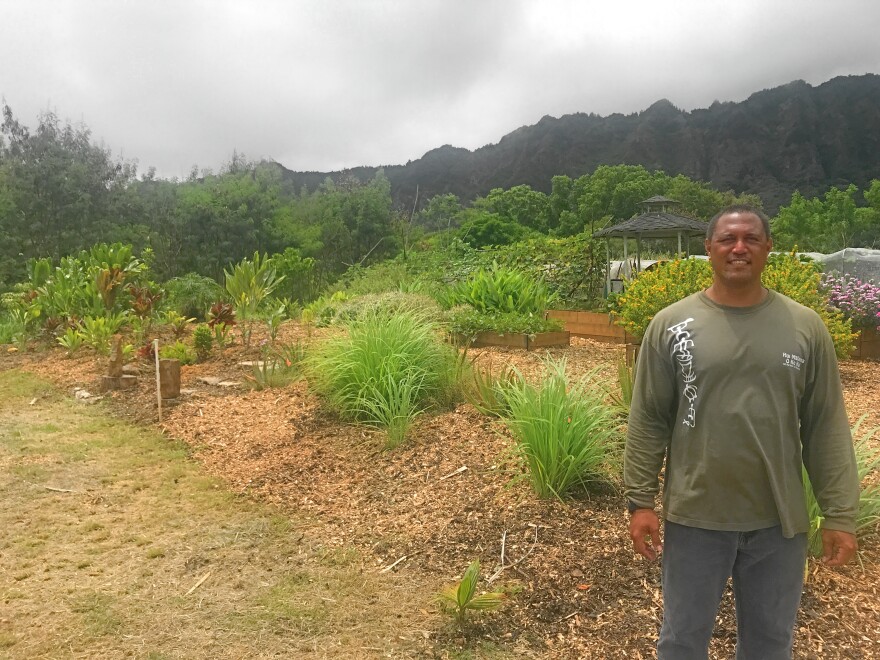Community medicine gardens may be just what the doctor ordered. Growing interest in traditional Hawaiian medicine in Waim?nalo has blossomed into a community garden. HPR Reporter Ku?uwehi Hiraishi takes us on a tour.
Ikaika Rogerson guides me along the mulch-covered floor of the Hawaiian medicinal garden he tends in Waim?nalo.

“I would say my garden is full of weeds because everything we have here is all l??au (plants) but its what everybody else digs out of their garden,” says Rogerson.
L??au lapa?au is the traditional Hawaiian practice of healing using plants. Practitioners list an arsenal of more than 2,500 plants used for various human ailments.
“L??au lapa?au is a fading art. I wouldn?t say dying art, but its fading,” says Rogerson, “Hopefully by being able to teach the community even just the basic different varieties of l??au that we have within the community and how to use it then maybe it?s an alternative....”
...an alternative to purchasing pills.

Some plants in the garden were recognizable. Like the sunburn-soothing aloe, the ever versatile ti-leaf, and the bright yellow ‘?lima.
“??lima is a female plant. It?s good for any female reproductive issues so you just take all of the buds and you make a tea out of it and the females have to drink it,” says Rogerson.
There’s also ‘awa, noni, and everyone’s favorite - ‘?lena or turmeric.
While it may take some time to identify a plant’s medicinal properties, Rogerson says plants give clues. Take pohe kula for example – this dainty green vine related to carrots and parsley.

“So if you look at the shape of the leaves...it’s in the shape of the brain,” says Rogerson, “And that?s how you remember that its for memory. So alzheimers and stuff like that is what it?s good for use it and make a tea. Or you can just rinse it and put it in a salad and just eat it just like this.”
He admits some of these garden remedies aren’t as pleasing to the palate. Like k?h?pai or the Madagascar periwinkle – a small shrub with purple or white flowers often used in landscaping.

“We use that to make a cleanse for your liver and your blood,” says Rogerson, “It?s the only one I don?t care for. It really tastes like medicine. Everything else I can bare, but that one tastes like medicine.”
Lein??ala Bright is a cultural health specialist at the Waim?nalo Health Center. She studied l??au lapa?au under Kaua?i kahuna Levon Ohai.
“I think its an amazing way to empower our community, our families, our individuals to become self-sustainable again,” says Bright, “...like we were in the past.”
She says she’s heard concerns about proper dosing, diagnosis and interactions with western medicine when it comes to l??au lapa?au.
“So we do have to be very careful, but at the same time I really believe our medicine is our food and our food is our medicine,” says Bright.




